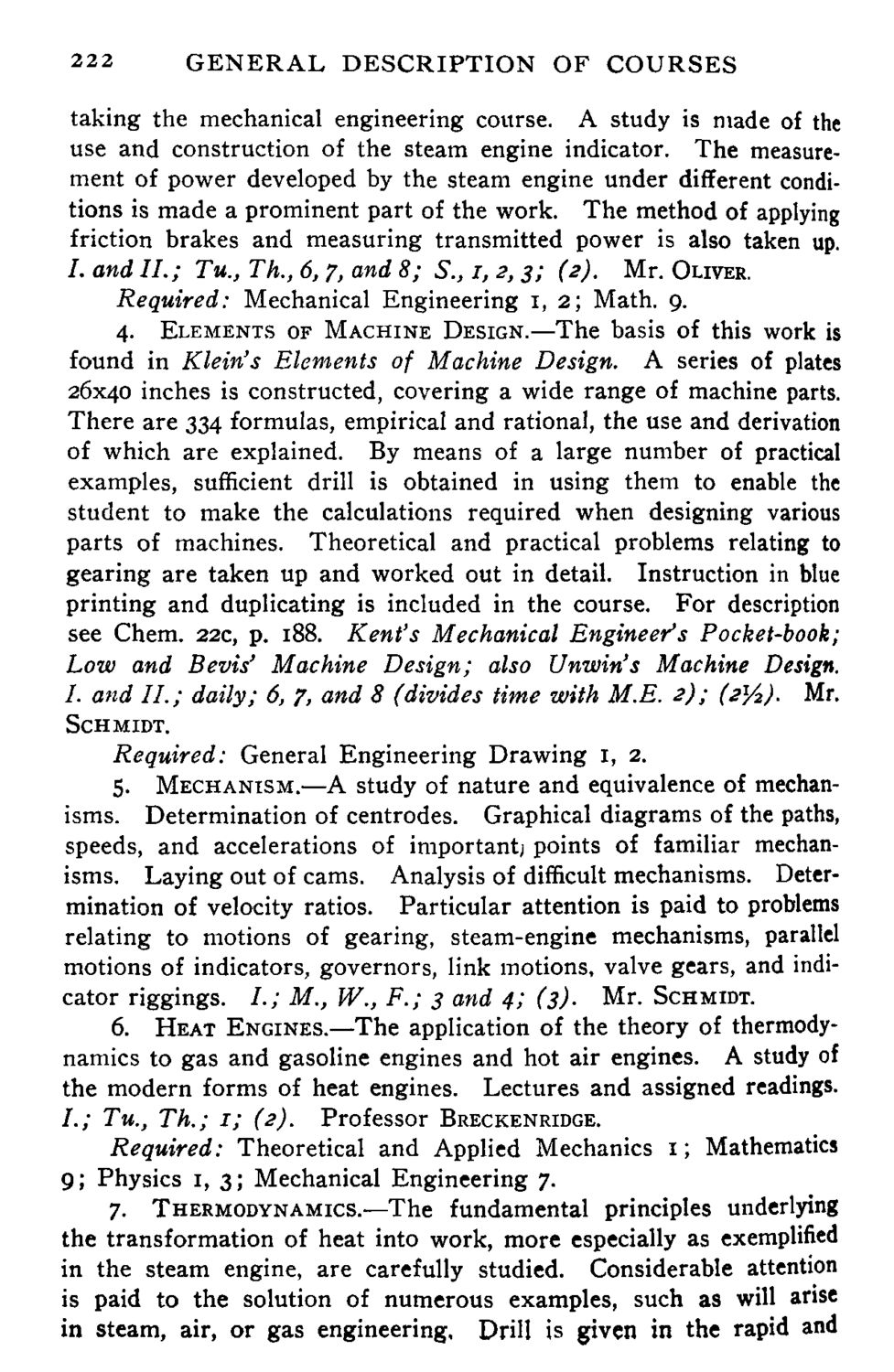| |
| |
Caption: Course Catalog - 1898-1899
This is a reduced-resolution page image for fast online browsing.

EXTRACTED TEXT FROM PAGE:
222 GENERAL DESCRIPTION OF COURSES taking the mechanical engineering course. A study is made of the use and construction of the steam engine indicator. The measurement of power developed by the steam engine under different conditions is made a prominent part of the work. The method of applying friction brakes and measuring transmitted power is also taken up. / . and II.; 4. Tu., Th., 6, 7, and 8; S., 1, 2, 3; (2). Mr. OLIVER. Required: Mechanical Engineering 1, 2; Math. 9. ELEMENTS OF MACHINE DESIGN.—The basis of this work is found in Klein's Elements of Machine Design. A series of plates 26x40 inches is constructed, covering a wide range of machine parts. There are 334 formulas, empirical and rational, the use and derivation of which are explained. By means of a large number of practical examples, sufficient drill is obtained in using them to enable the student to make the calculations required when designing various parts of machines. Theoretical and practical problems relating to gearing are taken up and worked out in detail. Instruction in blue printing and duplicating is included in the course. For description see Chem. 22c, p. 188. Kent's Mechanical Engineer's Pocket-book; Low and Bevis' Machine Design; also Unwin's Machine Design. I. and II.; daily; 6, 7, and 8 (divides time with M.E. 2); (2^/2). Mr. SCHMIDT. Required: General Engineering Drawing 1, 2. 5. MECHANISM.—A study of nature and equivalence of mechanisms. Determination of centrodes. Graphical diagrams of the paths, speeds, and accelerations of important) points of familiar mechanisms. Laying out of cams. Analysis of difficult mechanisms. Determination of velocity ratios. Particular attention is paid to problems relating to motions of gearing, steam-engine mechanisms, parallel motions of indicators, governors, link motions, valve gears, and indicator riggings. / . ; M., W., F.; 3 and 4; (3). Mr. SCHMIDT. 6. HEAT ENGINES.—The application of the theory of thermodynamics to gas and gasoline engines and hot air engines. A study of the modern forms of heat engines. Lectures and assigned readings. / . ; Tu., Th.; 1; (2). Professor BRECKENRIDGE. Required: Theoretical and Applied Mechanics 1; Mathematics 9; Physics 1, 3 ; Mechanical Engineering 7. 7. THERMODYNAMICS.—The fundamental principles underlying the transformation of heat into work, more especially as exemplified in the steam engine, are carefully studied. Considerable attention is paid to the solution of numerous examples, such as will arise in steam, air, or gas engineering, Drill is given in the rapid and
| |